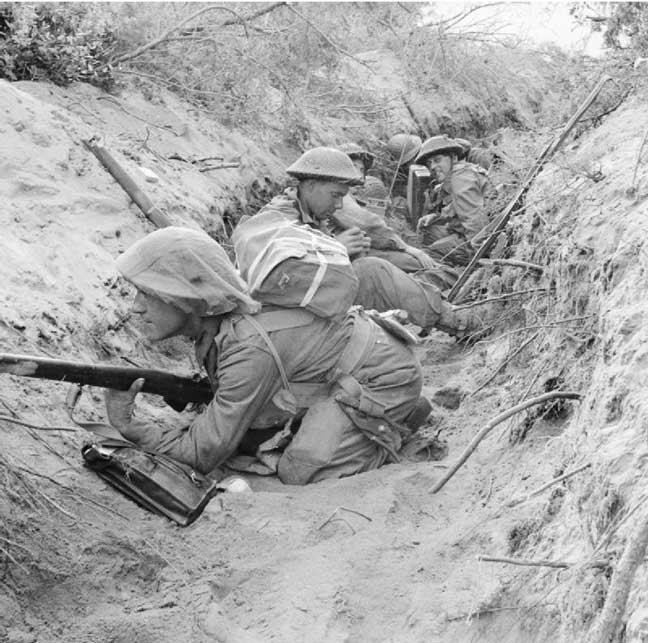January 22, 1944 Allies Land at Anzio

British troops
In an attempt to achieve a breakthrough on the Italian front the Allies launched Operation Shingle. The hope was that the landing would allow the Allies to break through the German lines and capture Rome. General John Lucas led the landing. The landing on January 22, 1944 at Anzio achieved tactical surprise and quickly landed three divisions. Once landed however the troops were ordered to dig in and prepare for a counterattack instead of moving inland rapidly. As a result the Germans sent reinforces and soon surrounded the beachhead . For the next few months inclusive battles took place between the two side with the allied forces unable to break out of the beachhead and the German unable to breach their defenses. Finally, on May 23 the Allies broke out of the beachhead and began to head for Rome.The Allies were bogged down in a slow slog up the boot of Italy. The geography favored the defenders and the German commander Field Marshal Albert Kesselring made use of the geography forcing the Allies to fight for every inch. To overcome the problem the Allies decided on an ambitious plan of staging an amphibious landing at Anzio leapfrogging the German defenders and then heading north and capturing Rome.
The Allied forces were commanded by General John Lucas. The Allies could only spare 2 division with limited number of landing craft. The Allies landed on January 22nd and took the Germans by surprise. They landed 40,000 troops and 5,000 vehicles. However, Lucas was very cautious and did not want to risk offensive operations until he had built up his defensive and brought all his forces ashore. As a result Kesselring was able to bring his forces to defensive position surrounding the Allied beach head. Attempts to break out of the beach head ended in failure. In an especially daring attack two ranger battalions tried to capture Ciserna. Only 6 men made it back to allied lines, wit 761 men killed or captured. The Germans mounted a counteroffensive in on February 3rd. The attack was repulsed with heavy casualties on both sides. By the end of February both sides had sustained nearly 20,000 casualties since the beginning of the fighting.
On February 22nd General Lucas was replaced by General Lucian Truscott. On May 23, 1944 the allies launched an all out offensive to break out. The goal was to strike inland and cut the main German withdrawal route. The first stage was to capture Cisterna- which was capture on May 25th after some of the most intensive fighting of the war. At this point the original plan had called for a continued thrust of all the forces Eastward. However, General Clark the overall commander of Allied troops in Italy ordered Truscott to pivot and head North towards Rome. Truscott reluctantly ordered the 1st armored division North and as a result the Germans were able to hold Route 6th open for their retreating troops for four days allowing 11 divisions to move North and fight another day.
 >
>